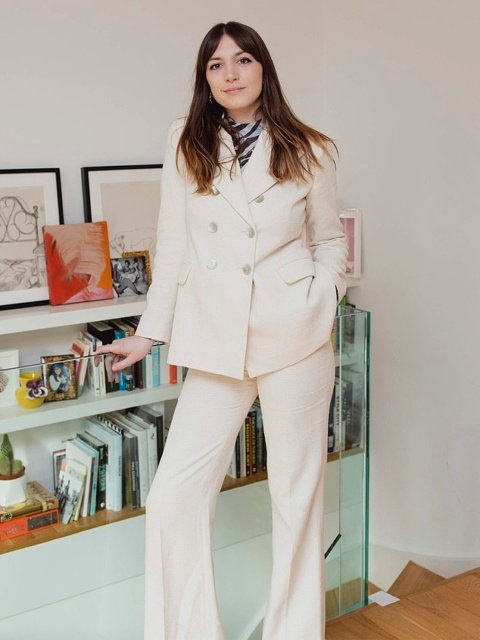Welcome back to Neural Notes, a weekly AI column where I explore some of the most interesting — and sometimes weird — AI news of the week. In this issue, I sit down with Leonardo.Ai’s senior creative technologist and artist-in-residence Jessie Hughes to talk about generative AI and its place in the art and business worlds.
I’m already tired of AI, and I’m not the only one
The past 18 months have left me tired of generative AI. The same conversations. The same tools from most big tech companies. The same copycats. The same arguments on either side.
So imagine my surprise when a fresh perspective entered the chat at Blackbird’s Sunrise conference this week. Yes, there are some incredible Australian minds working within this space. Many of them were even present.
But while I assumed every second word across the two days would be “AI” — I expected it to be woven into the the same tired conversations. The kind of thing that fades into the background. Quasi-intellectual white noise.
But to be transparent, I didn’t expect to be challenged or inspired by AI at this event. And to let you in on a little secret — neither did a single other person I spoke to at Sunrise. We were mostly cracking-wise about it.
Then Jessie Hughes walked in.
A fresh and informed perspective enters the chat
Leonardo.Ai had a large presence at Sunrise this year. And it’s no surprise. A handful of weeks ago it announced an enterprise offering for its AI-powered visual assets platform. This followed a staggering $47 million raise back in December.
In an overcrowded space that borders on stifling, Leonardo has actually managed to stand out from the crowd, squaring off against the largest tech companies in the world.
And this is imperative. Because in the bustling landscape of generative AI, there’s been a perpetual dialogue surrounding the intersection of creativity and technology.
On the one side, we have the businesses peddling the time and cost-saving opportunities it presents. On the other, there are the creatives left fearing for their livelihoods.
Both sides have valid points. This is particularly true for artists and writers whose work has — allegedly — been used to feed the LLM beasts of some of the biggest tech companies in the world. The businesses that can afford to do the right thing.
Hughes sits in the middle of these two worlds, as both a screenwriter and artist and technologist. She doesn’t see generative AI as something artists will have to fear at worst or tolerate at best — but as a boon to creative fields of expression.
“I’m a creative. I’m an artist. To me, gen AI is an absolute superpower. It’s extending my creative capabilities, which is why I’m deeply excited by it,” Hughes said to SmartCompany in Sydney this week.
“I think once we get more professional operatives using these tools and extending their practices, the rest of us are gonna be like, ‘holy shit, I didn’t think about that.’”
When it comes to the fear and mistrust of generative AI from the artist community, Hughes has a firm perspective.
“I think they haven’t used it,” Hughes said.
“For me, the exchange is that I give this, but I get something that’s so much bigger.”
For Hughes, generative AI has been an exploration of understanding the gains to her practice
“My creative capabilities have expanded 100 times bigger. I can now do 3D assets, illustration and motion,” Hughes said.
“I can do these things, which live in my head, but god I do not want to learn another 3D software.”
For Hughes, these tools make the creative process more accessible for artists.
“To be able to achieve the visions that I have I would then have to bring in collaborators and freelancers, and I love that process. But that costs money,” Hughes said.
There’s still room for manual artistry
That being said, Hughes is a firm believer in there being room for more manual work and generative AI in the artistic space.
“If you’re an artist and you love sitting down and making a pitch for 50 hours — awesome, keep doing that. That’s beautiful. That’s your process and I’m not trying to compete with that, please keep doing it” Hughes said.
“We will always have artisans and craftsmen… people who are phenomenal at their practice. Please keep doing your practice, please.”
Hughes says the reality is that for commercial use cases, these longer-form practices aren’t generally the most practical solution.
“The reality of commercial use case, if I need to do that, is different. It’s a different medium,” Hughes said.
“I have a three-year design degree, and then Canva came along. That wasn’t a threat to me. If people want taste-making design — they’re going to hire a designer. If they just need somebody who makes social media assets because they’re trying to promote a new shoe, they can go in and fix that business need.”
Outside of businesses, Hughes believes it’s important for the entire ecosystem for artists to get involved with AI.
“I beg creatives to get involved with gen AI because otherwise, they will led by Silicon Valley Tech bros.”
Other AI news this week
- Atlassian has a tool that allows businesses to create their own AI chatbots now
- Anthropic also has an enterprise option
- There’s been some confusion around whether Apple will or will not be announcing some AI news next week
- An OpenAI outage this week briefly borked some stuff on Rabbit R1 devices.


